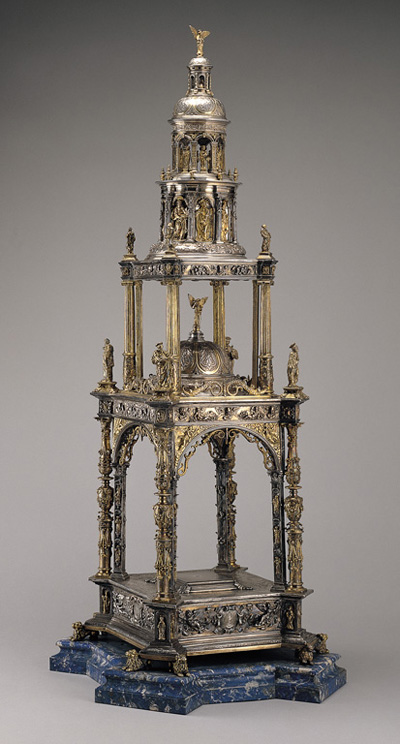Custodia from the Church of San Juan (Alarcón, Cuenca)
1585
Cristóbal Becerril (ca. 1539-85)
Gilt silver and lapiz lazuli
H. 94 cm
Spaniards attach particular importance to the festival of Corpus Christi, the feast dedicated to the Eucharist as a manifestation of Christ's body. On this day, the custodia, the monstrance holding Eucharistic wafers ("the Body of Christ" in Catholic theology) was paraded through the streets, accompanied by dignitaries, confraternities, believers, musicians, and floats with statues. In the late Middle Ages and Renaissance, custodias grew into large elaborate architectural ensembles many of which enshrined smaller monstrances during the procession, while for the rest of the year, they might also be used to store the host within the church.
This stunning example of the Spanish Renaissance is the only Spanish processional custodia in North America. The piece was commissioned from the silversmith Cristóbal de Becerril by Gaspar de Quiroga, bishop of Cuenca, for the church of San Juan in the nearby town of Alarcón. Becerril did not finish the work until 1585, under bishop Gómez Zapata, whose arms, along with those of Quiroga and a third bishop, Rodrigo de Castro, appear on shields decorating the work. Becerril, who came from a family of silversmiths at Cuenca, here creates an impressive multi-tiered work which affords ample evidence of his talents. The delicate reliefs and elongated figures reflect the example of the preeminent sculptor, Alonso Berruguete, while the architecture with its elegant classical features and Plateresque ornaments recall the finest contemporary Spanish works.
Text and images © Hispanic Society of America.
